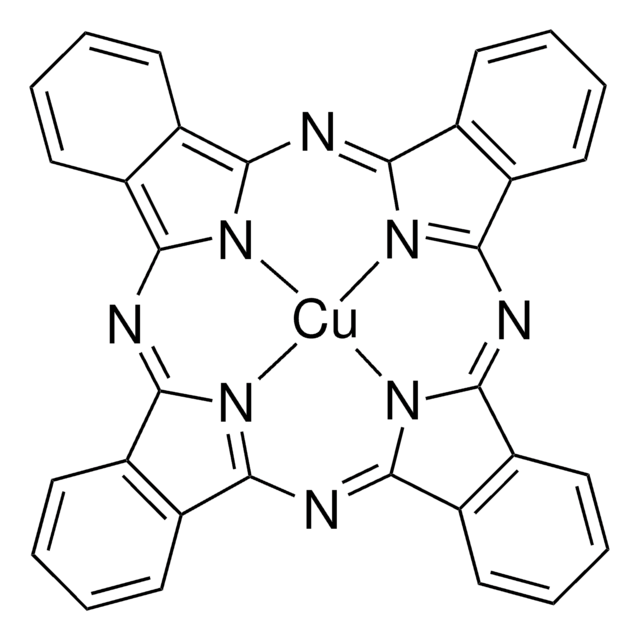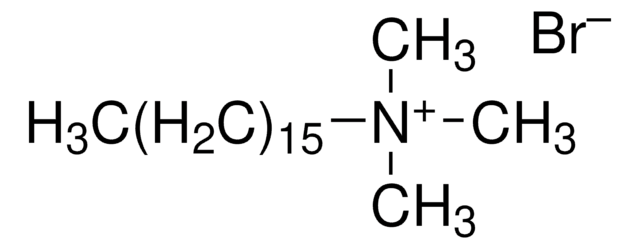432199
Leucoberbelin Blue I
Dye content 65 %
Sinonimo/i:
LBB
About This Item
Prodotti consigliati
Forma fisica
powder
Composizione
Dye content, 65%
Punto di fusione
>300 °C (lit.)
Solubilità
water: 50 g/L
λmax
253 nm
applicazioni
diagnostic assay manufacturing
hematology
histology
Temperatura di conservazione
room temp
Stringa SMILE
CN(C)c1ccc(cc1)C(c2ccc(cc2)N(C)C)c3ccccc3S(O)(=O)=O
InChI
1S/C23H26N2O3S/c1-24(2)19-13-9-17(10-14-19)23(18-11-15-20(16-12-18)25(3)4)21-7-5-6-8-22(21)29(26,27)28/h5-16,23H,1-4H3,(H,26,27,28)
MCKLFIWDQVFMEK-UHFFFAOYSA-N
Descrizione generale
Applicazioni
Avvertenze
Danger
Indicazioni di pericolo
Classi di pericolo
Eye Dam. 1 - Skin Corr. 1B
Codice della classe di stoccaggio
8A - Combustible corrosive hazardous materials
Classe di pericolosità dell'acqua (WGK)
WGK 3
Dispositivi di protezione individuale
Eyeshields, Faceshields, Gloves, type P3 (EN 143) respirator cartridges
Certificati d'analisi (COA)
Cerca il Certificati d'analisi (COA) digitando il numero di lotto/batch corrispondente. I numeri di lotto o di batch sono stampati sull'etichetta dei prodotti dopo la parola ‘Lotto’ o ‘Batch’.
Possiedi già questo prodotto?
I documenti relativi ai prodotti acquistati recentemente sono disponibili nell’Archivio dei documenti.
Il team dei nostri ricercatori vanta grande esperienza in tutte le aree della ricerca quali Life Science, scienza dei materiali, sintesi chimica, cromatografia, discipline analitiche, ecc..
Contatta l'Assistenza Tecnica.



